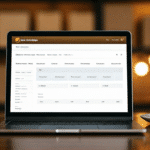Understanding the Importance of LSO for Freight Scales
Load Cell Shunt Output (LSO) technology is essential for accurately measuring and processing the weight of freight. By providing standardized output signals, LSO ensures the precision of weight measurements, which is critical for billing accuracy and operational efficiency. Inaccurate measurements can lead to revenue loss and customer dissatisfaction, making LSO a vital component in the shipping and logistics industries.
Industries such as food and pharmaceuticals rely heavily on precise weight measurements. Errors in these sectors can result in incorrect dosages or spoiled products, emphasizing the need for reliable LSO technology. Additionally, LSO enables remote monitoring and control of freight scales, allowing operators to make real-time adjustments and minimize downtime.
For more on the importance of accurate weight measurement in logistics, refer to the ISO Standards for Weighing Equipment.
Key Components of LSO for Freight Scales
An effective LSO system comprises several critical components:
- Load Cells: Primary sensors that measure the weight of the cargo.
- Shunt Resistor: Converts the load cell's analog signal to a digital signal.
- A/D Converter: Processes the digital signal and outputs the LSO signal.
Additional components may include software for data analysis, reporting, and communication interfaces that integrate with other systems. These elements work together to provide precise weight measurements, enhancing operational efficiency and reducing the risk of measurement errors.
For a deeper understanding of LSO components, visit the National Institutes of Health on Weighing Systems.
Different Types of LSO Technologies and Their Benefits
LSO technologies can be categorized into two main types:
- Analog LSO: Utilizes shunt resistors to convert load cell signals into LSO signals. While effective, analog systems can be susceptible to signal noise and may require more maintenance.
- Digital LSO: Employs digital circuitry for signal conversion, offering enhanced accuracy and reliability. Digital systems are easier to calibrate and often include advanced features such as automated adjustments.
The choice between analog and digital LSO depends on specific operational needs, with digital LSO generally providing superior performance and ease of use.
Learn more about the advantages of digital LSO in the Journal of Applied Measurement.
How to Choose the Right LSO for Your Freight Scale Needs
Selecting the appropriate LSO system involves evaluating several factors:
- Scale Size and Capacity: Ensure the LSO system can handle the maximum weight and dimensions of your freight scales.
- Type of Cargo: Different goods may require specific measurement accuracy and environmental considerations.
- Accuracy Requirements: Determine the level of precision needed for your operations to avoid billing errors and compliance issues.
- Environmental Conditions: Choose an LSO system that can withstand the operational environment, including exposure to moisture, temperature extremes, and vibrations.
- Automation Level: Decide between fully automated systems or those requiring manual input based on your workflow and technical expertise.
Consulting with an LSO technology expert can provide tailored recommendations to meet your specific requirements.
For guidelines on selecting weighing systems, refer to the British Standards Institution (BSI) guidelines.
Installation and Setup Process for LSO on Freight Scales
Proper installation and setup of an LSO system involve the following steps:
- Disconnect the power supply of the freight scale to ensure safety.
- Connect the shunt resistor to the load cell signal outputs.
- Wire the shunt resistor to the A/D converter.
- Configure the LSO scaling factor within the freight scale software.
- Calibrate the system to ensure accurate measurements.
- Test the system to verify proper functionality.
Installation procedures may vary based on the specific scale model and LSO system. Always refer to the manufacturer’s instructions or seek professional assistance to ensure correct setup.
Regular maintenance and calibration are crucial for sustaining accuracy. This includes inspecting the shunt resistor, verifying scaling factors, and conducting routine performance tests.
For detailed installation guidelines, visit the American National Standards Institute (ANSI).
Tips and Best Practices for Optimizing LSO Performance on Freight Scales
Enhance your LSO system’s performance with these best practices:
- Regular Calibration: Periodically calibrate the system to maintain measurement accuracy.
- Proper Grounding: Ensure all components are correctly grounded to minimize signal interference.
- High-Quality Load Cells: Invest in reliable load cells to ensure consistent and precise weight measurements.
- Controlled Environment: Install the LSO system in areas with stable temperature and humidity to prevent environmental factors from affecting accuracy.
- Operator Training: Train staff on correct usage and troubleshooting techniques to maximize system efficiency and reduce errors.
Maintaining optimal environmental conditions and providing comprehensive training to operators can significantly enhance the reliability and performance of your LSO system.
For more optimization strategies, refer to the World Health Organization (WHO) guidelines on equipment maintenance.
Common Issues with LSO on Freight Scales and How to Troubleshoot Them
LSO systems can encounter various issues, including:
- Signal Interference: Caused by electrical noise or improper grounding, leading to inaccurate readings.
- Grounding Issues: Poor grounding can result in unstable signal outputs and measurement errors.
- Improper Scaling: Incorrect calibration factors can distort weight measurements.
To troubleshoot these issues:
- Inspect and ensure all connections are secure and properly grounded.
- Check for sources of electrical noise and implement shielding or filtering as necessary.
- Verify and adjust the scaling factors within the software to match the system’s specifications.
- If problems persist, consult with an LSO expert for a comprehensive diagnosis.
Inaccurate weight readings may also stem from worn load cells or damaged scale platforms. Regular inspections and maintenance can help identify and resolve these issues promptly.
For troubleshooting techniques, refer to the Systems Health Resource Center.
How to Maintain and Upgrade Your LSO System for Maximum Efficiency
Maintaining and upgrading your LSO system ensures sustained accuracy and efficiency:
- Regular Testing and Calibration: Schedule periodic evaluations to maintain system precision.
- System Cleaning: Keep the LSO components free from dust and debris to prevent performance degradation.
- Environmental Control: Store and operate the LSO system in environments with controlled temperature and humidity.
- Software Upgrades: Update system software to incorporate new features and security enhancements.
Upgrading to newer LSO technologies can offer improved accuracy, enhanced reliability, and additional functionalities such as integration with advanced analytics and monitoring tools.
Consult with technology providers to explore upgrade options that align with your operational needs.
For maintenance best practices, visit the Maintenance Professionals Society.
Integrating LSO with Other Logistics and Supply Chain Technologies
Integrating LSO systems with other logistics technologies can streamline operations and enhance overall efficiency:
- GPS Tracking: Combining LSO with GPS provides real-time visibility of freight locations, aiding in routing and delivery optimizations.
- Warehouse Management Systems (WMS): Integration with WMS facilitates seamless inventory tracking, order processing, and shipment management.
- Enterprise Resource Planning (ERP) Systems: Linking LSO with ERP systems enables comprehensive data analysis and informed decision-making.
A unified system allows for better control over weight measurements, billing processes, and supply chain operations, ultimately leading to increased customer satisfaction and revenue growth.
Explore integration solutions with the Supply Chain Digital portal.
Case Studies: Successful Implementations of LSO on Freight Scales
Numerous businesses have successfully implemented LSO systems, demonstrating significant improvements in accuracy and efficiency:
- Shipping Company: A major shipping firm integrated an LSO system, reducing weight measurement errors and enhancing billing accuracy. This led to increased operational efficiency and higher customer satisfaction.
- Pharmaceutical Manufacturer: Implementing LSO ensured precise dosage measurements, preventing product spoilage and ensuring regulatory compliance.
- Food Distributor: LSO integration allowed for accurate weight tracking of perishable goods, minimizing waste and optimizing inventory management.
These case studies highlight the transformative impact of LSO technology on various aspects of logistics and supply chain management.
For more detailed case studies, refer to the Logistics Management magazine.
Future Trends in LSO Technology for Freight Scales
The future of LSO technology is poised to incorporate advanced innovations such as:
- Machine Learning and Artificial Intelligence: Enhancing predictive maintenance, improving measurement accuracy, and enabling real-time analytics.
- IoT Integration: Connecting LSO systems to the Internet of Things for enhanced data collection and remote monitoring.
- Cloud Computing: Facilitating scalable data storage, advanced analytics, and seamless integration with other cloud-based systems.
- Enhanced Security Features: Implementing robust cybersecurity measures to protect sensitive data and ensure system integrity.
These advancements will drive greater precision, efficiency, and integration capabilities, further optimizing freight scale operations.
Stay updated with future trends by following the TechRepublic Supply Chain section.
Cost-Benefit Analysis of Investing in LSO for Your Business
Investing in an LSO system offers substantial benefits that often outweigh the initial costs:
- Increased Accuracy: Reduces billing errors and ensures compliance with industry standards.
- Operational Efficiency: Streamlines weight measurement processes, minimizing downtime and enhancing productivity.
- Revenue Growth: Accurate measurements lead to proper billing, reducing revenue loss and improving profitability.
- Customer Satisfaction: Reliable weight measurements build trust and improve customer experiences.
Additionally, LSO systems can help identify inefficiencies within the supply chain, enabling targeted improvements that further enhance business performance.
Conduct a comprehensive cost-benefit analysis tailored to your business needs to fully understand the return on investment. For guidance, refer to the Harvard Business Review on cost-benefit analysis methods.
Comparing Different Brands and Models of LSO Systems for Freight Scales
The market offers a variety of LSO systems from different manufacturers, each with unique features and benefits:
- Brand A: Known for high precision and robust build quality, suitable for heavy-duty applications.
- Brand B: Offers user-friendly interfaces and seamless integration with existing logistics software.
- Brand C: Specializes in digital LSO systems with advanced analytics and remote monitoring capabilities.
When comparing brands and models, consider factors such as accuracy, reliability, ease of integration, customer support, and overall cost. Engaging with an LSO technology expert can provide insights into the best options tailored to your specific requirements.
For product comparisons and reviews, visit the Capterra Weighing and Scales Software Directory.






















